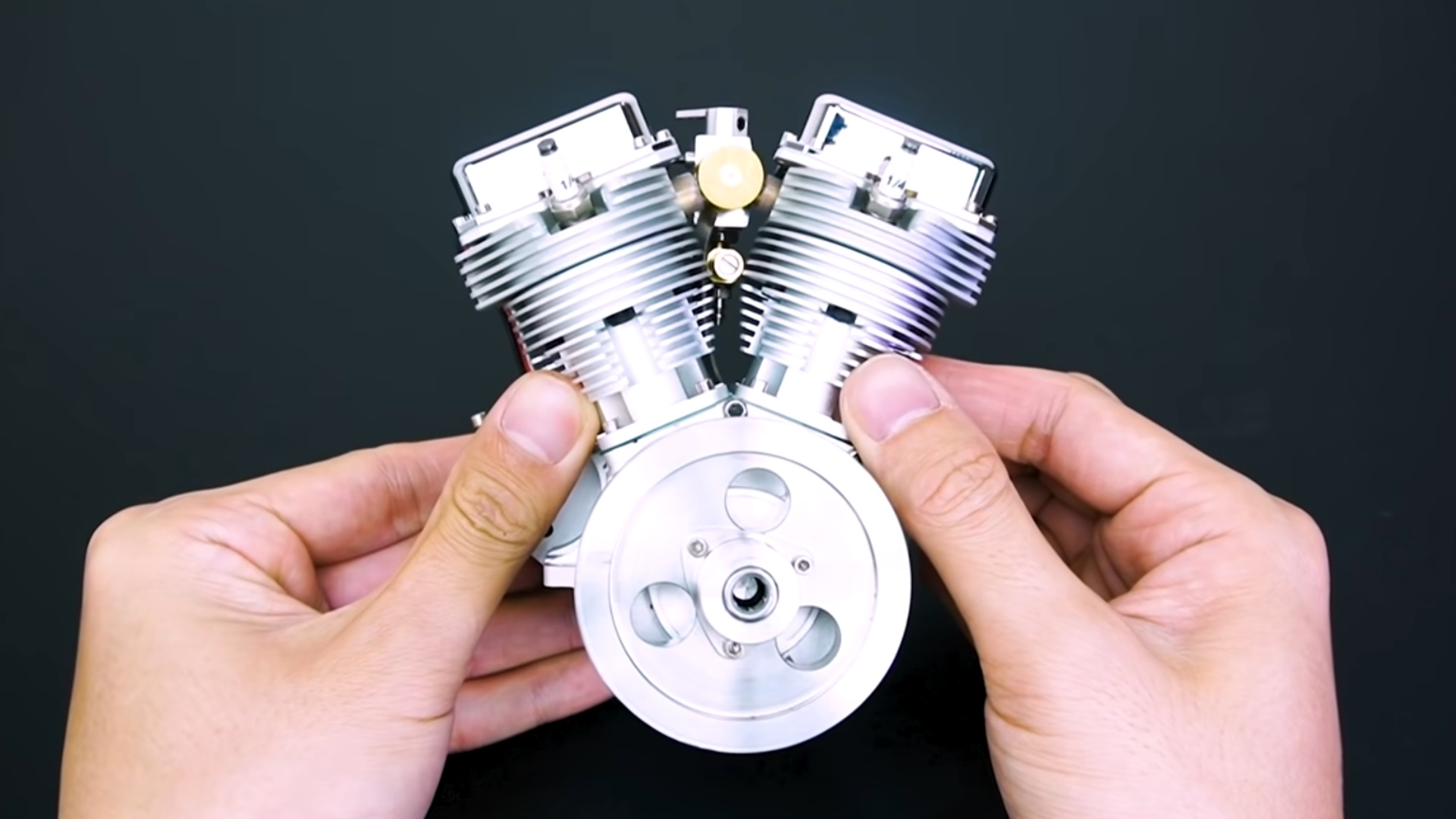

Even if California’s enthusiasm for small engines is waning, I’m all about microscopic powerplants. From tiny diesel-powered slot cars to handmade wooden V8s, I enjoy motors that can fit on a desktop. That makes this 9cc V-twin engine with less than one single horsepower incredibly appealing to me.
To be clear, this is a fully functioning engine complete with what appears to be the world’s smallest spark plugs. It’s a model V-twin called the CISON FG-VT9, and it’s offered for sale by a number of retailers. What could you use it for? Well, anything.

Typically, engines such as this—if they have a purpose besides entertainment—are used in model aircraft. This one doesn’t seem intended for that sort of use, however. It has a flywheel not designed to fit a propeller, mounting points unlike a model aircraft engine, and its power output—about three-quarters of a horsepower—is on the low side for its weight. It doesn’t mean it’s not possible to rig up this 3.3-pound engine into the nose or tail of a tiny plane, it just means it’s probably not intended for that.
Despite its aeronautical applications being uncertain, this tiny V-twin is still sweet. Featuring a pint-sized carburetor, tiny copper tailpipes, and a redline of 8,000 rpm, it makes all the right chopper noises—just in miniature. Similar to a full-sized Harley-Davidson engine, the FG-VT9 is air-cooled, although it does not feature a proper lubrication system for its valvetrain. In the video below, you can see the rocker arms and timing gears are both simply greased up, while the all-important crankshaft appears to run on a tiny sealed ball bearing.

Besides that, the engine features a stroke of 21mm, a bore of 16.6mm, and it has to be started with a drill, or something along those lines. How much does it cost for all of this palm-sized power? $600, which is actually pretty good all things considered.
It’s also worth noting that 45 degrees is actually the ideal bank angle for a V16. So if you’re willing to shell out the cash for eight of these things and sort through all of the foibles involved with combining a bunch of little engines together, you could have—for all intents and purposes—a more complicated version of a Briggs & Stratton, but with less torque. Sign me up.
Got a tip or question for the author? You can reach them here: peter@thedrive.com